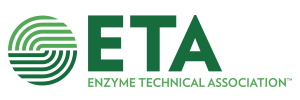Safe Handling of Enzymes
Enzyme preparations have been used in the manufacture of foods and in industrial processes for many years. In fact, rennet has been used in cheese manufacturing since biblical times. Enzyme preparations have a long history of being used in the production of foods, such as in the dairy, wine, brewing and distilling, starch, and baking industries. Since the early 1900s, some enzyme preparations have been known to enhance cleaning action. They were first widely introduced into detergent formulations in the 1960s for this purpose. Enzyme preparations are also used as diagnostic reagents and in the pharmaceutical, tanning, textiles and paper industries.
Commercial enzymes are produced from the fermentation of specially selected nonpathogenic, nontoxigenic strains of microorganisms or extracted and purified from plant or animal sources. Typically, the enzyme preparation does not contain the production microorganism. Enzyme products are available in a variety of physical forms: Liquids, slurries, granules and powders.
When handling concentrated enzyme preparations – as with most substances used in industrial processes – care should be taken to avoid skin contact and inhalation of aerosols. Enzymes can be used safely without any adverse health effects through the use of good work practices, engineering controls, and appropriate personal protective equipment.
Safety Information
-
- Working Safely with Enzymes English (PDF)
- Consumer Risk Assessment for Products Containing Enzyme Preparations (PDF)
- ETA GHS Guidance for Enzymes (PDF)
- ETA Position Paper Biotechnology, Enzymes and Allergies (PDF)
- Safe Handling of Enzymes Textile Chemist and Colorist American Dyestuff-Reporter Vol.-32-No.-1 January 2000 (PDF)
- AISE-Enzymes-Safe-Handling-v2-1-June_2015 (PDF 2.1 MB)
- Guidance for the Risk Assessment of Enzyme-Containing Products, American Cleaning Institute, Dec. 2019 (PDF)
- ETA and AMFEP Guideline on Consumer Risk Assessments for Enzyme-Containing Personal Care Products and Cosmetics (PDF)
Working Safely with Enzymes video
This presentation will provide information for enzyme manufacturers and users on the properties of enzymes, health effects, methods to minimize potential exposure through control measures, workplace and medical surveillance, and testing.
